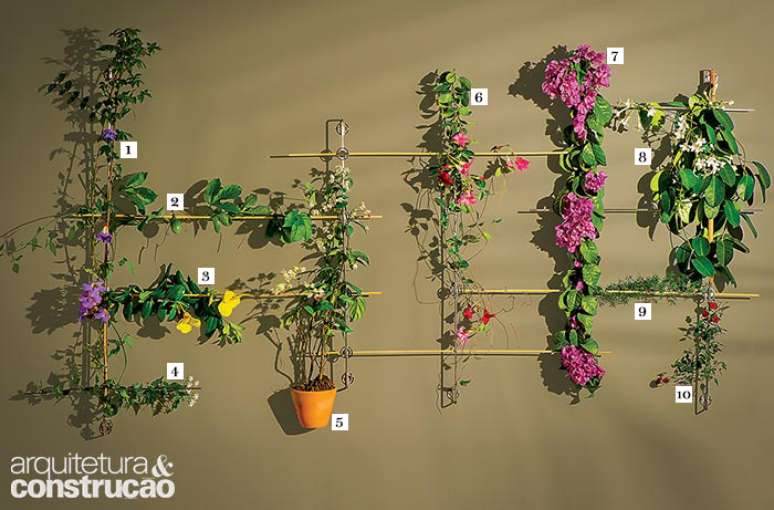Discover a selection of climbing plants that will leave your pergola beautiful, fragrant and well covered all year round
Upwards and forwards: The superhero motto also seems to fit perfectly into the creepers’ routine. In this selection, the ten species combine beauty and scent, attractions that make them particularly interesting species for covering structures such as pergolas and gazebos.
Versatile, they also climb walls and create delicate vertical gardens, like the one shown in the photo. Here, the Trama Line support, in wood and stainless steel, is the work of designer Alex Wiechmann, a new product about to be launched nationally.
Discover the main characteristics of each species below.
1. The bluish flowers of tumbergia appear all year round, especially in the warm season. She likes partial shade and full sun.
2. Passion fruit foliage grows vigorously, but fruit only appears if there is another plant nearby for pollination to occur. Butterflies love the species.
3. Due to the heavy branches, it is best to place the alamanda on sturdy structures. Yellow buds appear several times during the year, especially in warm places.
4. Native to Africa, Azorean jasmine exudes a stronger scent than that of American species. It loves full sun or partial shade and does well on the coast.
5. Sensitive to cold places, the teardrop takes a while to grow, but the pace accelerates in full sun. Attracts rare bumblebees.
6. Dipladenia (or mandevilla, as it is also known) prefers warm weather and flowers quickly. Excellent for the coast, it has light branches.
7. Throughout Brazil, spring is also responsible for bougainvillea. Give curls ranging from white to bright red, in a simple or bent version. Loves the sun and tolerates mild winters.
8. Madagascar jasmine loves light. However, it suffers if exposed directly to the sun. It also grows in pots, as long as it is well drained.
9. The foliage of hanging asparagus resists cold temperatures and sprouts in hard-to-reach places thanks to its short roots. Be careful of the thorns: although small, they are resistant.
10. Delicate, the climbing rose needs to be tied to climb structures, as it has thin, flexible stems. It thrives best in full sun.
Source: Terra
Ben Stock is a lifestyle journalist and author at Gossipify. He writes about topics such as health, wellness, travel, food and home decor. He provides practical advice and inspiration to improve well-being, keeps readers up to date with latest lifestyle news and trends, known for his engaging writing style, in-depth analysis and unique perspectives.








